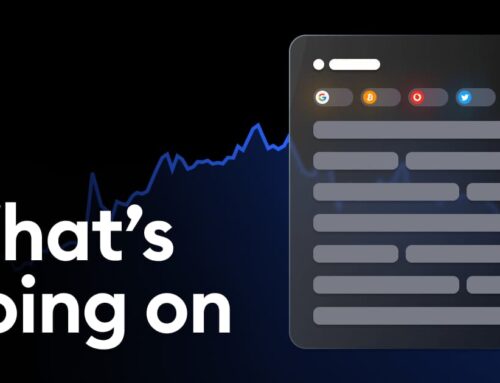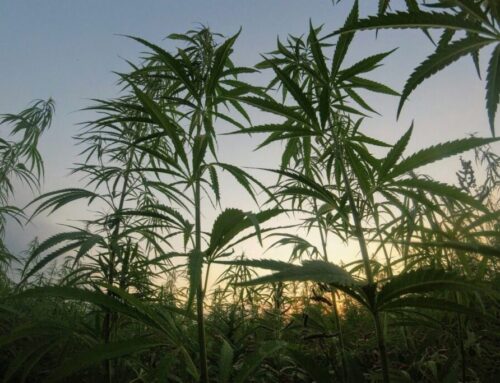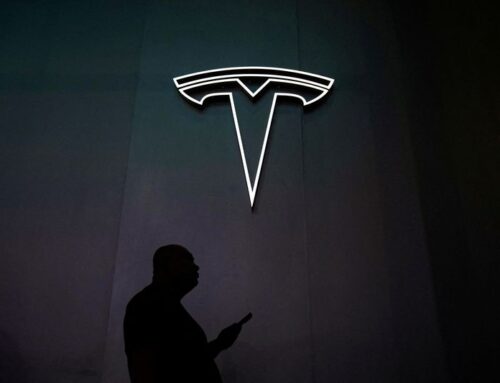Nevada overstating economic benefits of Tesla factory, analysts...
September 28, 2014
Nevada Gov. Brian Sandoval
Surrounded by lawmakers and staff members, Nevada Gov. Brian Sandoval signs into law an unprecedented package of incentives to bring Tesla Motors’ $5-billion battery factory to the state. (Cathleen Allison / Associated Press)
By CHRIS KIRKHAM contact the reporter BusinessAutomotive IndustryBusinessColleges and UniversitiesEconomyElectric and Hybrid Vehicles
Economists see flawed assumptions and inflated projections in the Nevada’s promises of Tesla factory benefits
Tesla officials say the battery factory will supercharge the local economy of Nevada
Nevada’s estimates rely on the assumption that almost all of Tesla’s supply chain will relocate to the state
When Nevada Gov. Brian Sandoval announced a $1.3-billion package of public subsidies to lure a Tesla Motors battery factory, he stressed that the huge sum would be dwarfed by an economic windfall for local residents.
The electric car maker will create $100 billion in economic benefits, he said, and “change Nevada forever.”
“Even the most skeptical economist would conclude that this is a strong return for us,” Sandoval said during a news conference this month with Tesla Chief Executive Elon Musk.
Economists who reviewed Nevada’s economic benefit estimates for the Los Angeles Times concluded something quite different. They pointed to flawed assumptions and inflated projections in the state’s promises of job creation, tax revenue and overall spending created by the $5-billion lithium-ion battery facility.
The projection, for instance, counts all future tax revenue, but makes no allowance for government spending to serve the influx of residents. It counts every dollar of workers’ salaries as if they were unemployed or lived out of state before Tesla arrived. And more than half of the estimated economic jolt relies on the assumption that the bulk of the factory’s supply chain will relocate to Nevada.
Tesla plans to hire 6,500 workers, and the estimate counts a projected 16,000 additional jobs from suppliers and other local business to serve the new workforce.
Beyond concerns over the estimate’s accuracy, some experts say it’s misleading to frame economic benefits as a payoff of taxpayers’ investments. The $100-billion figure, they say, distracts from the central questions underlying any such deal: Do the lost tax dollars ever come back? Do local residents get wealthier?
lRelated Brown signs bill to urge more drivers into eco-friendly vehicles
CALIFORNIA POLITICS
Brown signs bill to urge more drivers into eco-friendly vehicles
SEE ALL RELATED
8
“It’s an incredibly distorting value,” said David Swenson, an economic analysis expert at Iowa State University. “It’s a mechanism of presenting economic information in a way that produces something like a return-on-investment ratio, but it’s not. It’s like kudzu. I can’t chop it down fast enough.”
Tesla officials, for their part, say the factory will supercharge the local economy of Nevada. While economists have scrutinized the incentive package, the automaker should be credited for a commitment to manufacturing in the U.S. rather than lower-cost markets such as Mexico, they say.
“The idea that this is some kind of giveaway to a private corporation, at the expense of taxpayers, is fallacious,” said Diarmuid O’Connell, Tesla’s vice president of business development. “The bottom line is that this project, and other projects like it, are huge economic multipliers.”
Even the most skeptical economist would conclude that this is a strong return for us.
– Nevada Gov. Brian Sandoval
Nevada’s offer was “not the richest deal” the company was offered during months of discussions with officials in Texas, New Mexico, Arizona and California, he said. The decision also hinged on proximity to rail lines and freeways, along with a less complicated regulatory regime.
“We are obligated to obtain the best arrangement that we can — as are the economic development officials for the taxpayers of their state,” O’Connell said. “This is the essence of free-market behavior.”
Officials with the Nevada Governor’s Office of Economic Development declined to comment beyond what was in the report.
Tesla’s “gigafactory” is a bid to bring down the cost of the automaker’s batteries enough to produce the world’s first mainstream electric car. The $1.3-billion incentive package is one of the largest such deals ever struck by a state, according to data compiled by Good Jobs First, a Washington think tank that focuses on government subsidies.
cComments
@Max Plank I agree that subsidies are not the best reflection of consumer demand, but the 3rd generation Model 3 will be priced in the ~$35k range which makes it reasonable for the everyday Joe. Like I said, I have my beard scratching in full effect, but Musk is not a government flunky. I…
BEAST_SPQR
AT 8:52 AM SEPTEMBER 28, 2014
ADD A COMMENTSEE ALL COMMENTS
74
Tesla, which recorded $2 billion in revenue last year, is one of the smallest companies to receive such a hefty incentive package. By comparison, Chrysler — which received a deal of roughly the same value, $1.3 billion, from Michigan in 2010 — had revenue of more than $72 billion in 2013.
Boeing won the largest-ever such package last year, netting $8.7 billion from Washington state. The aerospace and aircraft manufacturer posted sales of more than $86 billion.
Nevada’s estimates rely heavily on the assumption that almost all of Tesla’s supply chain will relocate to the state, which some experts find far-fetched, particularly for an area with no such history of industrial production.
Such estimates are typically modeled using historical supply chain data for various industries. Since Tesla’s production strategy is new and untested, economists say that undercuts the validity of any long-term projections.
“You don’t really know for a fact what will happen,” said Timothy Bartik, a senior economist at the W.E. Upjohn Institute for Employment Research in Kalamazoo, Mich.
The Tesla factory is expected to produce $37.5 billion in economic benefits over 20 years, but the report estimates even more gains from 16,000 additional jobs tied to Tesla suppliers and other local businesses. Such indirect jobs are projected to produce an additional $59.4 billion in economic activity over 20 years — more than half the total estimated effect.
The money that Tesla pays workers will circulate through other local businesses in a process the report calls “the recycling of local spending.”
The state’s analysis assumed that almost all of the plant’s supplies would be met by companies based in the local area. The report calls this the “most likely scenario” in one section, but then later says it is “somewhat unlikely that this very high supplier concentration would be achieved” in the region.
Sarah Murley, a principal at Applied Economics, the Phoenix firm that performed the analysis, is confident that the factory will attract suppliers to Nevada.
“For really large operations like this one, it’s much more common for suppliers to co-locate,” she said. “If you get that kind of an operation in Reno, we can all agree that it’s going to be a fundamental change in their economy.”
The report counts the full salary of each projected worker, but it doesn’t account for what those workers may already be contributing to Nevada’s economy.
“To assume that the economic impact is $100 billion assumes that everybody who was ever going to work at that battery plant was unemployed,” said Enrico Moretti, an economics professor at UC Berkeley.
Choosing a 20-year time frame to analyze also makes the projected economic effect look huge compared with any benefits given to Tesla. But that’s misleading, said Swenson, the Iowa state economist.
“It doesn’t mean anything,” he said. “Let’s assume I made $50,000 over the last 20 years. Therefore, I’m a millionaire, right?”
To truly gauge the benefits, economists said, studies would have to look at ways in which lives are improved: Do property values go up? Do current residents see their incomes rise, or are the benefits going to outsiders? Does the average wage in the community rise? Are government services better than they were before?
Economists see a similar flaw with the report’s analysis of tax revenue.
Tesla Model S
CAPTION
Tesla Model S
Tesla Motors
The Tesla Model S is a showpiece of the electric-car maker’s design prowess, targeting a demanding and well-heeled niche of customers.
CAPTION
Tesla Model S
Tesla Motors
The Tesla Model S is a showpiece of the electric-car maker’s design prowess, targeting a demanding and well-heeled niche of customers.
CAPTION
Tesla Model S
Tesla Motors
The Tesla Model S is a showpiece of the electric-car maker’s design prowess, targeting a demanding and well-heeled niche of customers.
CAPTION
Tesla Model S
Tesla Motors
The Tesla Model S is a showpiece of the electric-car maker’s design prowess, targeting a demanding and well-heeled niche of customers.
CAPTION
Tesla Model S
Tesla Motors
The Tesla Model S is a showpiece of the electric-car maker’s design prowess, targeting a demanding and well-heeled niche of customers.
The report predicts that Tesla would pay $459.6 million in taxes over the next 20 years. By comparison, that’s about a third of the total tax breaks that Tesla is slated to collect.
But a separate section of the report credits Tesla with creating nearly $2 billion in new tax revenue. That figure was derived by adding taxes paid by workers in both direct and indirect jobs over two decades.
Although it counts the revenue, it makes no allowance for new costs for roads, schools or other government services needed to serve thousands of new workers.
“They’re treating all this revenue as if it’s free profit that’s just going to be sent back to everyone as a rebate,” said Dan Rickman, an economics professor at Oklahoma State University who specializes in regional economic analysis and reviewed the Nevada studies for The Times.
Further, Tesla will collect benefits upfront, which could starve local governments of vital revenue, said Peter Fisher, an Iowa expert on tax incentive programs.
lRelated Brown signs bill to urge more drivers into eco-friendly vehicles
CALIFORNIA POLITICS
Brown signs bill to urge more drivers into eco-friendly vehicles
SEE ALL RELATED
8
“They’re giving back 99% of Tesla’s direct taxes in the first nine years, yet there are going to be all these new workers with families and children,” said Fisher, research director of the Iowa Policy Project and a professor emeritus of urban and regional studies at the University of Iowa. “One way or another, I think the locality is going to find themselves with a strain on local government services.”
chris.kirkham@latimes.com
Twitter @c_kirkham
Copyright © 2014, Los Angeles Times
Search
RECENT PRESS RELEASES
Related Post




